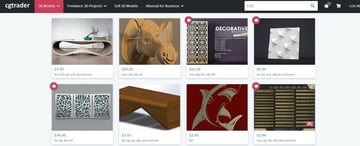

Browse through the site and see spectacular imagery and animations and details on the morphology of many representatives of the Earth’s biota. The Digital Morphology library is a dynamic archive of information on digital morphology and high-resolution X-ray computed tomography of biological specimens. Search and contribute today! Digital Morphology This site provides 3D scans – CT and surface – of biological and palaeontological specimens for free download by the academic and educational community. Create model libraries that can be used for development of mapping utilities for the documentation of new sites in both 2D and 3D formats. Create 3D site models that can be explored interactively, with links to 3D models of significant specimens and viewing modes that highlight stratigraphic as well as spatial relationships. Serve as an archive of images and diagrams, 3D models, and animations illustrating research and educational projects that have been published separately or are in progress. Provide access to digital models of comprehensively identified skeletal elements of select comparative specimens to serve as a digital reference collection, facilitating anatomical identifications of new specimens. Generate digital models of specimens in the UMMP collection of Type and Figured specimens to facilitate access to these frequently requested specimens, reducing the need for loans of this material and the consequent risk of damage to specimens during transport. University of Michigan Museum of Paleontologyġ. It also provides an opportunity to download models for 3-D printing as well as to comment and share images of your favorite printed fossil objects on our forum. The digital collection of animals, human ancestors, as well as ancient stone tools offers a unique tool for scholars and enthusiasts to explore and interact with the collection online. This virtual lab showcases a spectacular collection of fossils and artifacts found mostly at Lake Turkana in East Africa. Next they should research each of those animals and try to understand those variations based on the animal’s phylogenetic relationships and ecological niches. A useful exercise would be to have students begin by selecting a bone, and describing its variations among several different animals.

The learning objectives are for students to learn the parts of the skeleton, to recognize that different species have the same bones, and that those bones take on different shapes depending on the relationships and ecological niche of the species. MorphoSource search results can be linked to labeled renderings of full articulated skeletons in order to explore anatomical diversity by clicking on the familiar parts of the body as represented by the articulated skeleton above that will bring them to a MorphoSource page that displays versions of that bone for different kinds of animals.


 0 kommentar(er)
0 kommentar(er)
